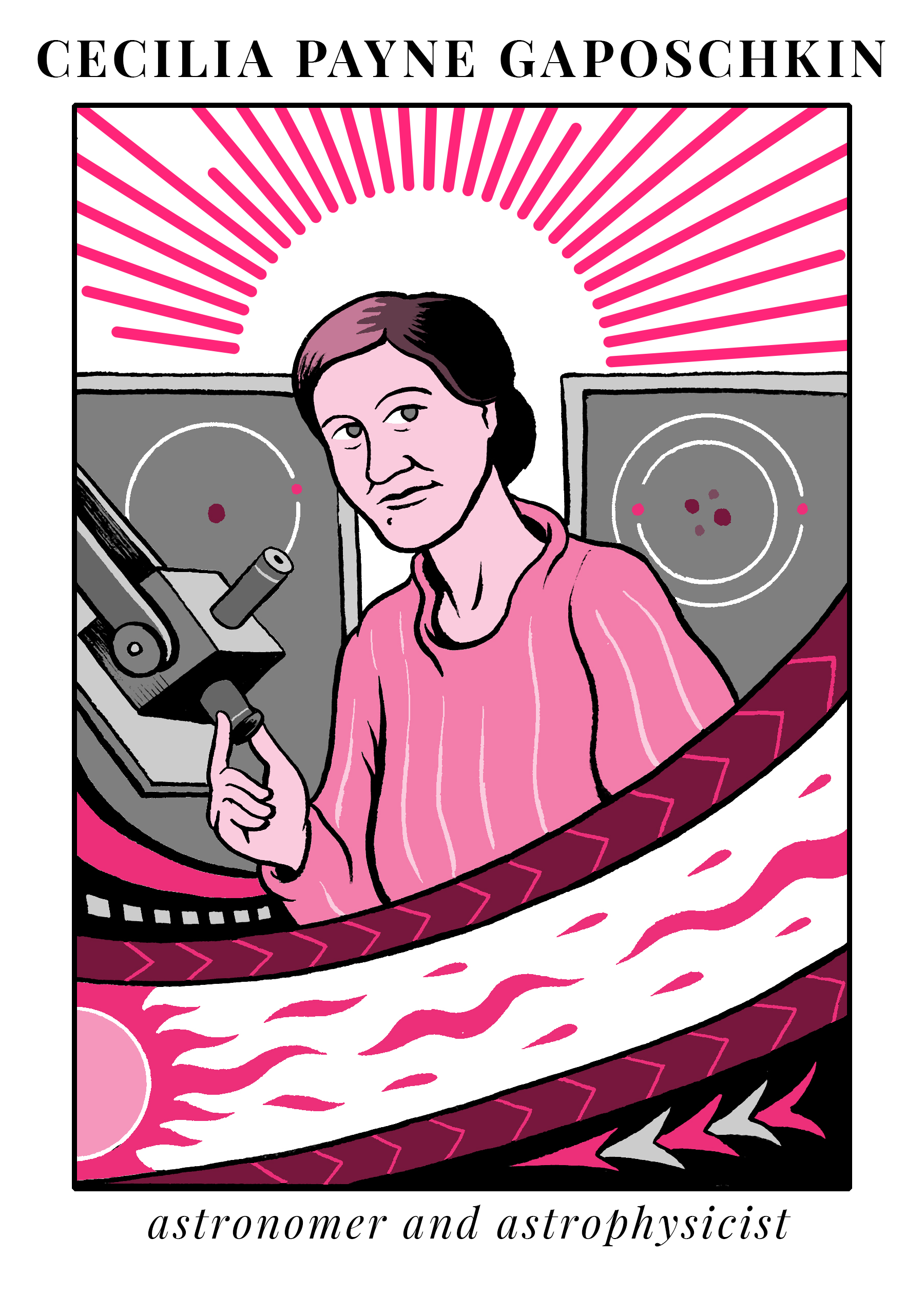
Matteo Farinella
Meet Cecilia Payne-Gaposchkin, who figured out what the universe is made of
Stifled by sexism in Europe, she made foundational discoveries in astronomy after coming to the US
"I spring quite literally from a pagan background."
There is only one person capable of introducing themselves that way in their own autobiography: Cecilia Payne-Gaposchkin, one of the most original scientists to ever live. She was the first to determine that the stars were made of hydrogen and helium. In doing so, as a young graduate student, she bucked contemporary scientific theory. Prevented by sexism from being awarded her degree, and then a professorship, she eventually became the first woman to chair a department at Harvard University.
Cecilia Payne knew she wanted to be a scientist early on. As an eight year old, she recognized a bee orchid from her mother’s stories about the Italian Riviera. She later recalled that moment saying, “For the first time I knew the leaping of the heart, the sudden enlightenment, that were to become my passion.” The rush of excitement that comes when the final puzzle piece fits into place, of seeing theory confirmed by practice, is something many scientists can identify.
“I think my life as a scientist began at that moment”

Matteo Farinella
She attended a private school, run by Miss Elizabeth Edwards, and credited her time there with providing her a rich education. But even with the best teachers, school in early 1900s England wasn’t exactly a nursery for open-mindedness or the pursuit of knowledge. Left-handed students like Cecilia were forced to use their right hand, a process she found difficult and uncomfortable. As was the case with many schools at the time, religious trappings also meant that long hours were dedicated to hymn and prayer.
When it came time for college, Payne settled on astronomy after bouncing between botany and physics, and credited another teacher, the astrophysicist Arthur Eddington, for putting her on the path of stars. In her first year at Cambridge, she attended a transformative lecture by Eddington about his expedition to test Einstein’s general theory of relativity by observing the stars near a solar eclipse.
She remembered the power of that lecture: “My world has been so shaken that I experienced something very like a nervous breakdown.” Payne published her first academic paper with Eddington as an undergraduate student, and even late in life considered him “the greatest man I have been privileged to know.”
Studying physics at Cambridge in 1920s was a lonely prospect for a woman. Payne sat alone, since she was not allowed to occupy the same rows of seats as her male classmates. Though Payne fulfilled all the requirements for a degree in 1923, women were only granted "certificates" at Cambridge until 1948.
Such restrictive, sexist polices stifled any hope of a research career in the UK, so Payne moved to the United States. At the time, there was no regular graduate astronomy program at Harvard Observatory. For Payne, the intellectual stimulation and comparative freedom at Harvard was intoxicating. She threw herself into her work, spending long days and nights at the Observatory.
The work paid off, and in 1925 Payne became the first person to earn a PhD in astronomy from Harvard University, advised by with Harlow Shapley, the head of the Observatory. In her thesis, she inferred the cosmic abundance of the elements from stellar spectra, the range of radiation emitted by stars.
Her results showed that helium and especially hydrogen were by far the most common elements in stars, and hence in the universe. It was a view that contradicted the scientific consensus of the time, which was that the Sun, a star, and the Earth, a rocky planet, would provide similar spectra if measured at the same temperature.
_(3).jpg)
Cecilia Payne-Gaposchkin
Via Wikimedia
Astronomer Otto Struve, director of Yerkes Observatory in Wisconsin, gushed that her work was “undoubtedly the most brilliant PhD thesis ever written in astronomy." A number of prominent astronomers of the day, including Henry Norris Russell, director of the Princeton University Observatory, dismissed her work as impossible. But even her staunchest critics relented after independent observations later proved that she was correct. Payne’s findings are now central to any introductory astronomy course, where students learn that the Milky Way Galaxy is composed of ~73% hydrogen, 25% helium, and 2% other elements.
After her PhD, Payne took on a slew of less prestigious, low-paid research jobs, as women were not permitted to enter the Harvard academy at the time. She met her husband, Sergei Gaposchkin, during a visit to the Astronomische Gesellschaft meeting in Gottingen in 1933. The marriage spanned four decades, producing three children and stacks of manuscripts and books about the cosmos. Eventually, in 1956, Payne-Gaposchkin became both the first female professor in her faculty, and the first woman to become department chair at Harvard.
In 1976, the American Astronomical Society awarded her their highest honor, the Henry Norris Russell Prize (named after the same Henry Norris that once criticized her PhD work), in recognition of a lifetime of excellence in astronomical research. In her acceptance speech, Payne-Gaposchkin reflected on the thrill of discovery that she’d chased ever since she’d recognized that orchid as a little girl, saying “The reward of the young scientist is the emotional thrill of being the first person in the history of the world to see something or to understand something. Nothing can compare with that experience.”
Payne-Gaposchkin died in Cambridge in 1979. Near the end of her life, she wrote “Young people, especially young women, often ask me for advice. Here it is, valeat quantum. Do not undertake a scientific career in quest of fame or money. There are easier and better ways to reach them. Undertake it only if nothing else will satisfy you; for nothing else is probably what you will receive. Your reward will be the widening of the horizon as you climb. And if you achieve that reward you will ask no other.”

